Float:The orchard float is used to prepare the orchard floor before harvest. It scrapes and leaves a smooth surface.
(Almond/Nut Equipment) |
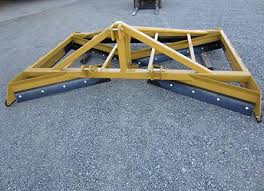
|
Shaker:Shakers are commonly boom type or side shakers.
(Almond/Nut Equipment) |
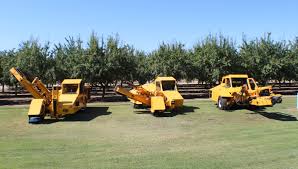
|
Sweeper:Sweepers take the shaken nuts and place them in a windrow for pickup by the harvester.
(Almond/Nut Equipment) |

|
Towed Nut Harvester:The nut harvester (or pickup machine) picks up the nuts windowed by the sweeper. Debris is removed in this process. This style is towed by a tractor.
(Almond/Nut Equipment) |
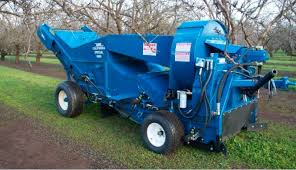
|
Self-propelled Nut Harvester:The nut harvester (or pickup machine) picks up the nuts windowed by the sweeper. Debris is removed in this process. This model is self propelled.
(Almond/Nut Equipment) |
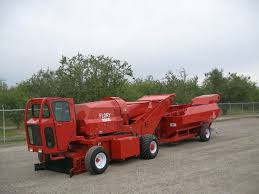
|
Shuttle Cart:Shuttle carts are used to transport nuts from the harvester to the elevator.
(Almond/Nut Equipment) |

|
Elevator:Nut elevators (or conveyors) move nuts from a shuttle cart or bankout wagon to the truck.
(Almond/Nut Equipment) |

|
Combine:Use to harvest a variety of crops such as grain, corn, soybeans, safflower, and sunflowers.
(Combines/Harvesters) |

|
Corn Header:Attached to a combine to harvest corn (in rows).
(Combines/Harvesters) |
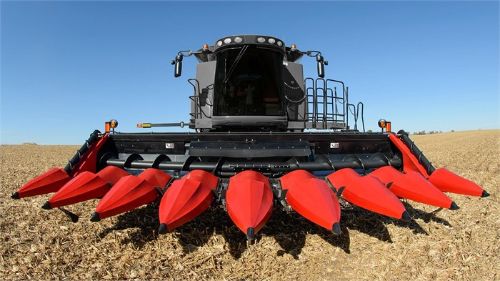
|
Grain Header:Attached to a combine to harvest grain.
(Combines/Harvesters) |
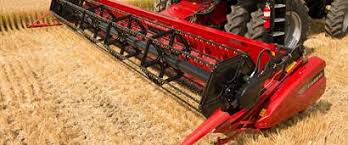
|
Cotton Picker:"Picks" cotton - removing the lint from the plant.
(Combines/Harvesters) |
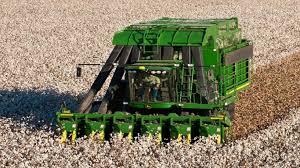
|
Bean Harvester:Used to harvest dry beans.
(Combines/Harvesters) |

|
Intake Manifold:The intake manifold distributes air from the air cleaner to the cylinders. If the engine is turbocharged then the turbo charger will be mounted between the air cleaner and the intake manifold.
(Engine Components) |
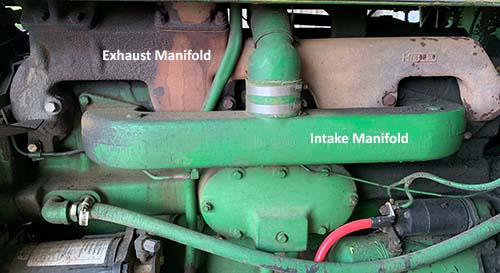
|
Air Filter:Dry filter elements keep the air entering the engine clean. Many tractor use an inner element and outer element.
(Engine Components) |
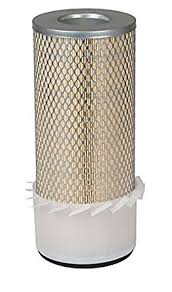
|
Air Filter Housing:The housing contain the air filter(s). It is connected to the intake manifold on the engine and on some tractors to a pre-cleaner on the air intake side.
(Engine Components) |
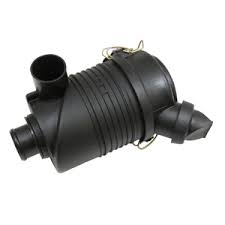
|
Pre-cleaner:Some tractors use a pre-cleaner to separate dirt from the incoming air. This helps prevent clogging of the air filter under dusty conditions.
(Engine Components) |

|
Alternator:The alternator is driven by a belt from the engine and creates electrical power for the engine accessories and charging the battery.
(Engine Components) |

|
Battery:The battery stores electrical power for starting the engine. Modern tractor batteries are either 12 volt or 24 volt.
(Engine Components) |

|
Starter:The starter is an electric motor used to start the engine with power from the battery.
(Engine Components) |

|
Radiator:The radiator cools the engine. The water pump circulates through the internal tubes of the radiator and the fan blow air over the tubes to carry away heat.
(Engine Components) |

|
Radiator Cap:The radiator cap seals the radiator and maintains a low pressure that causes the boiling point of the coolant to be higher. On engine without an overflow tank the cap is removed to check the coolant level. CAUTION: Do not open the cap on a hot radiator.
(Engine Components) |

|
Coolant Overflow Tank:Coolant expands as it heats. The overflow tank hold the excess coolant and returns it to the radiator as the radiator cools. Coolant level is check in the tank, not the radiator.
(Engine Components) |
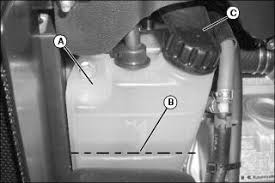
|
Water Pump:The water pump is mounted on the front of the engine and driven by a belt. It circulates coolant through the engine.
(Engine Components) |

|
Fan:The fan pushes or pulls air across the radiator. It is commonly mounted to the water pump.
(Engine Components) |

|
Exhaust Manifold:The exhaust manifold directs exhaust gasses from the engine cylinders to the exhaust piping and the muffler. If the engine is turbocharged the turbocharger will be mounted between the exhaust manifold and the exhaust piping. Note the rusty appearance; paint is quickly burned of the manifold due to the high temperature of the exhaust gasses.
(Engine Components) |

|
Injection Pump:The injection pump provides fuel to the diesel engine. It is usually found on the side of the engine and is connected to the fuel system with rigid steel tubes.
(Engine Components) |

|
Turbo Charger:The turbocharger fits between the intake and exhaust systems. It is basically an high speed fan that pushes more air into the engine. It is driven by the exhaust gasses.
(Engine Components) |

|
Muffler:The muffler quiets the exhaust. On row crop tractors the muffler is commonly found mounted vertically above the engine. On orchard and utility tractor the muffler is mounted under the tractor.
(Engine Components) |
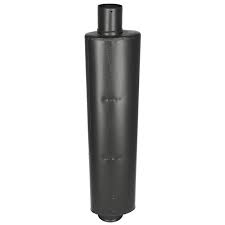
|
Windrower:The windrower (swather) cuts the crop. It may also condition the crop by crushing the stems to speed drying.
(Hay/Forage) |

|
Parallel Rake:The parallel or side delivery rake is used to combine windrows to make more efficient baling. The rake also turns the windrow to speed drying.
(Hay/Forage) |

|
Wheel Rake:The rake is used to combine windrows to make more efficient baling. The rake also turns the windrow to speed drying.
(Hay/Forage) |

|
Rotary Rake:The rake is used to combine windrows to make more efficient baling. The rake also turns the windrow to speed drying. Rotary rakes are commonly used to turn hay.
(Hay/Forage) |
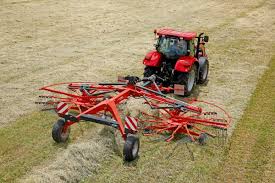
|
Square Baler:The baler compresses the hay in to a rectangular bale. The balers vary in size making bales from 80 pounds to over 2000 pounds. Square bales easily stack.
(Hay/Forage) |
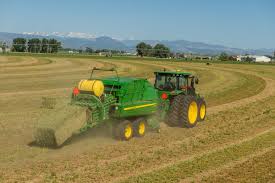
|
Round Baler:The baler compresses the hay in to a round bale. These bales may be wrapped. Round bales are not easily transported so most are used on farm.
(Hay/Forage) |
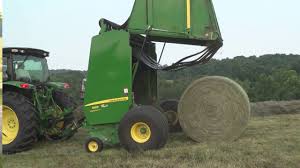
|
Balewagon:The bale wagon is used to pickup bales in the field and stack them.
(Hay/Forage) |
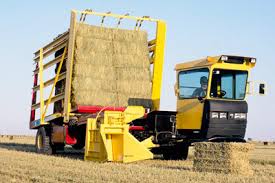
|
Hay Squeeze:The squeeze is similar to a forklift and is used move stacks of bales.
(Hay/Forage) |
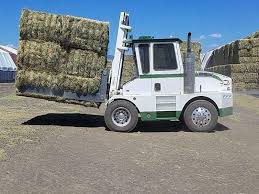
|
Bale Spike:Bale Spikes are used to move round or large square bales. Shown is a 3 point hitch model. They are very common mounted on a front end loader (replaces the bucket).
(Hay/Forage) |
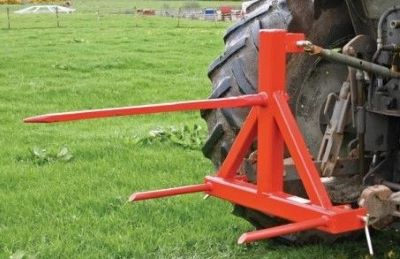
|
Self Propelled Forage Harvester:These machines take windrowed hay, corn and chop for silage. The also can have headers that directly cut the crop.
(Hay/Forage) |

|
Towed Forage Harvester:These machines take windrowed hay or corn and chop for silage.
(Hay/Forage) |
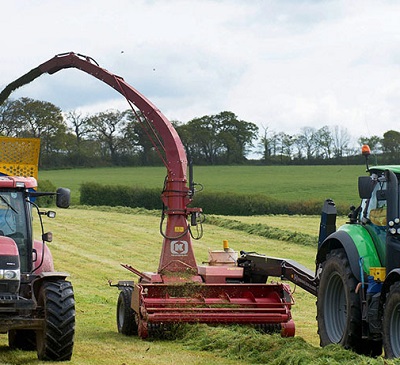
|
Forage Wagon:A forage harvester has no way to store the crop so these wagons (or similar trucks) are used to collect the forage and haul to storage.
(Hay/Forage) |
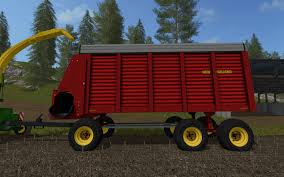
|
Silage Bagger:Bagged are used to pack the fresh silage into plastic bags for airtight storage
(Hay/Forage) |
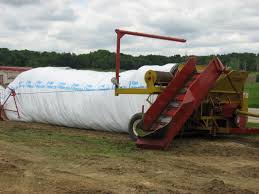
|
Hydraulic Oil Tank:Tanks are the reservoirs for hydraulic oil. On tractors the reservoir is built into the tractor.
(Hydraulics) |

|
Hydraulic Valve:Valves allow the operator to control hydraulic components like cylinders and motors.
(Hydraulics) |

|
Hydraulic Pump:Hydraulic pumps are commonly driven by an engine or the tractor PTO. A gear pump is shown.
(Hydraulics) |

|
Hydraulic Cylinder:Cylinders provide linear power. They are commonly found on loaders and implements like towed discs.
(Hydraulics) |

|
Hydraulic Motor:Hydraulic motors provide rotary power to equipment.
(Hydraulics) |

|
Hydraulic Hose:Hydraulic hose is steel reinforced to withstand the high pressure.
(Hydraulics) |
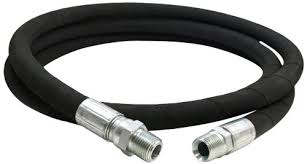
|
Filter:Hydraulic filters keep the oil clean.
(Hydraulics) |

|
Hydraulic Cylinder:Cylinders provide linear power. They are commonly found on loaders and implements like towed discs.
(Hydraulics) |

|
Hydraulic Valve:Valves allow the operator to control hydraulic components like cylinders and motors.
(Hydraulics) |

|
Hydraulic Motor:Hydraulic motors provide rotary power to equipment.
(Hydraulics) |

|
Hydraulic Hose:Hydraulic hose is steel reinforced to withstand the high pressure.
(Hydraulics) |

|
Filter:Hydraulic filters keep the oil clean.
(Hydraulics) |

|
Hydraulic Pump:Hydraulic pumps are commonly driven by an engine or the tractor PTO. A gear pump is shown.
(Hydraulics) |

|
Front End Loader:Tractor loaders are mounted on the front of a tractor.
(Industrial) |
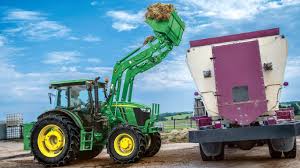
|
Loader (articulated):Articulated loaders steer by bending in the middle of the machine.
(Industrial) |
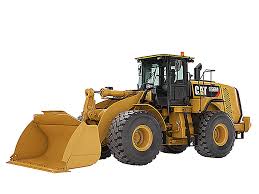
|
Forklift:Forklifts are used to move materials
(Industrial) |
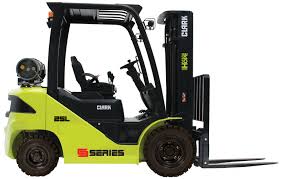
|
Backhoe:Backhoes commonly have a loader bucket in the front. The "hoe" is mounted on the rear and used to dig holes or trenches.
(Industrial) |
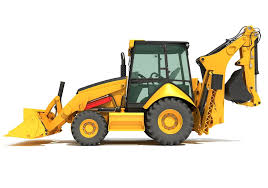
|
Skid-steer loader:Skid-steer loaders as the name implies steer by skidding the tires. They are small an maneuverable. Although the loader bucket is the most common attachment they also can attach to augers, jack hammers, forks, and other implements.
(Industrial) |

|
Excavator:Similar in function to a backhoe, but does not have a loader.
(Industrial) |
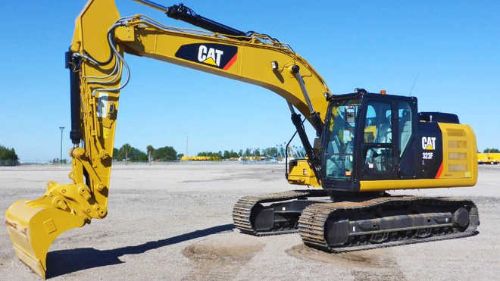
|
No-Till Drill:Similar to a conventional drill the style of planter is used to plan directly into plan residue without the need for prior tillage.
(Planters) |
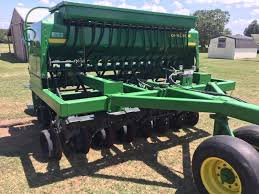
|
Grain Drill:This style of planter is used primarily to plan grain or forage mix. Drill are commonly 6"-10" apart.
(Planters) |
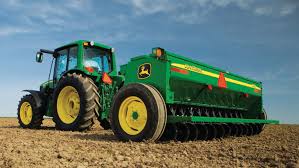
|
Air Planter:Air pressure is used to meter the seeds for planting. Air planters are used for planting row crops (on beds).
(Planters) |
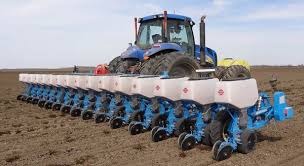
|
Broadcast Seeder:Seed to spread on the surface of the soil. Seed is metered from a hopper onto a rotating disk that spreads the seed.
(Planters) |
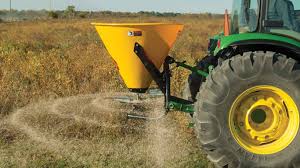
|
Transplanters:Transplanters are used to plant live plants. Commonly used for vegetables.
(Planters) |

|
Sprayer:Used to apply liquid material to crops.
(Sprayers/Fertilizer Applicators) |
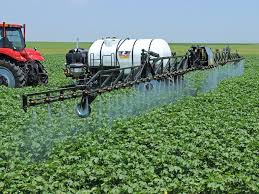
|
Liquid Fertilizer Applicator:Similar to sprayer, but liquid is not spread. A "side dresser" uses shanks to place the fertilizer in the ground. Liquid can also be spread on the surface.
(Sprayers/Fertilizer Applicators) |

|
Manure Spreader:Used to spread manure or compost. Can be truck mounted.
(Sprayers/Fertilizer Applicators) |

|
Fertilizer Spreader:Spreads dry fertilizer in orchards, vineyards, or unplanted fields.
(Sprayers/Fertilizer Applicators) |
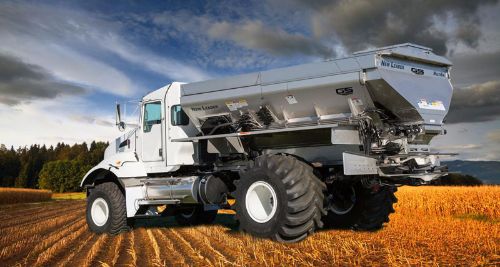
|
Air Blast Sprayer:Used in orchards and vineyards.
(Sprayers/Fertilizer Applicators) |
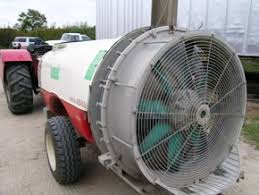
|
Spray Nozzle:The nozzle is used to distribute the spray evenly.
(Sprayers/Fertilizer Applicators) |

|
Strainer:Used to prevent nozzle clogging in sprayers
(Sprayers/Fertilizer Applicators) |

|
Sprayer Tank:Used to hold liquid material for sprayers or liquid fertilizer applicators
(Sprayers/Fertilizer Applicators) |

|
Roller Pump:Common pump used for PTO driven pumps. Lower volume.
(Sprayers/Fertilizer Applicators) |
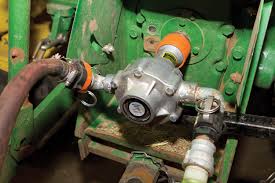
|
Centrifugal Pump:Common pump used for sprayers needing higher volumes.
(Sprayers/Fertilizer Applicators) |
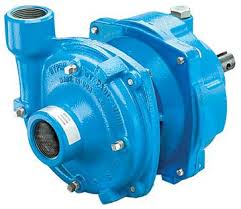
|
Pressure Regulator:Used to maintain a constant pressure in spray systems.
(Sprayers/Fertilizer Applicators) |
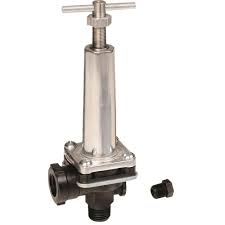
|
Electric Valves:Electric valves are mounted on the sprayer to operate the booms. They are controlled by the tractor driver.
(Sprayers/Fertilizer Applicators) |
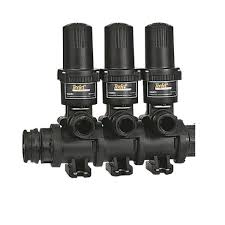
|
Bed Lister:The lister is used to make beds in flat ground. It uses steel shovels mounted on a bar.
(Tillage) |

|
Moldboard Plow:Moldboard plows are used to turn the soil. The plow slices the soil and the "moldboard" turns the slice.
(Tillage) |

|
Stubble Disc:The stubble disc has notched blades to better chop up heavy stubble.
(Tillage) |
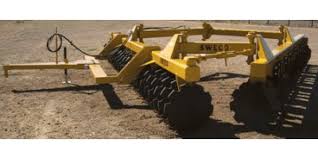
|
Disc Harrow:The disc harrow is used to incorporate plant material (stubble) into the soil and turn the earth.
(Tillage) |
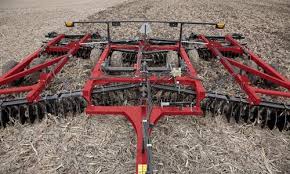
|
Rotary Cultivator:A rotating set of steel "fingers" are used to remove weeds.
(Tillage) |
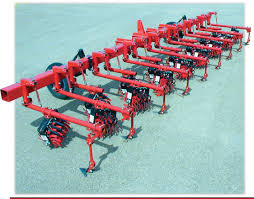
|
Sweep Cultivator:Sweeps or shovels are used to "hoe" the beds and remove weeds.
(Tillage) |
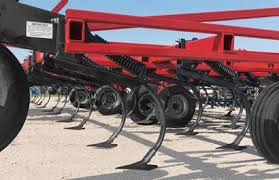
|
Ring Roller:Ring rollers are used after tillage operations like discing to break up clods.
(Tillage) |

|
Spike Tooth Harrow:The spike tooth harrow is used for light tillage and cultivation.
(Tillage) |

|
Spring Tooth Harrow:The spring tooth is used for light tillage and cultivation.
(Tillage) |
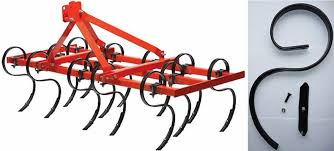
|
Ripper / Sub-soiler:Shanks rip deeply in to the soil to break up the soil and improve drainage and aeration. Shanks may be 18" to over 6' in depth.
(Tillage) |
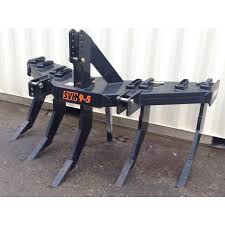
|
Two wheel drive (2WD) Tractor:Front wheels are not traction (lugged) type.
(Tractors) |

|
Mechanical Front Wheel Drive (MFWD) Tractor:Front wheels are traction type and smaller than rear wheels.
(Tractors) |

|
4WD Four Wheel Drive (4WD) Tractor:Front and rear wheels are the same size.
(Tractors) |

|
Dual Wheel Tractor:Commonly found in 2WD and MFWD. 4WD commonly have dual wheels front and back.
(Tractors) |

|
Rubber Track Tractor:Rubber tracks come in a variety of configurations.
(Tractors) |

|
Steel Track Tractor:Steel tracks come in a variety of configurations.
(Tractors) |

|


























































































